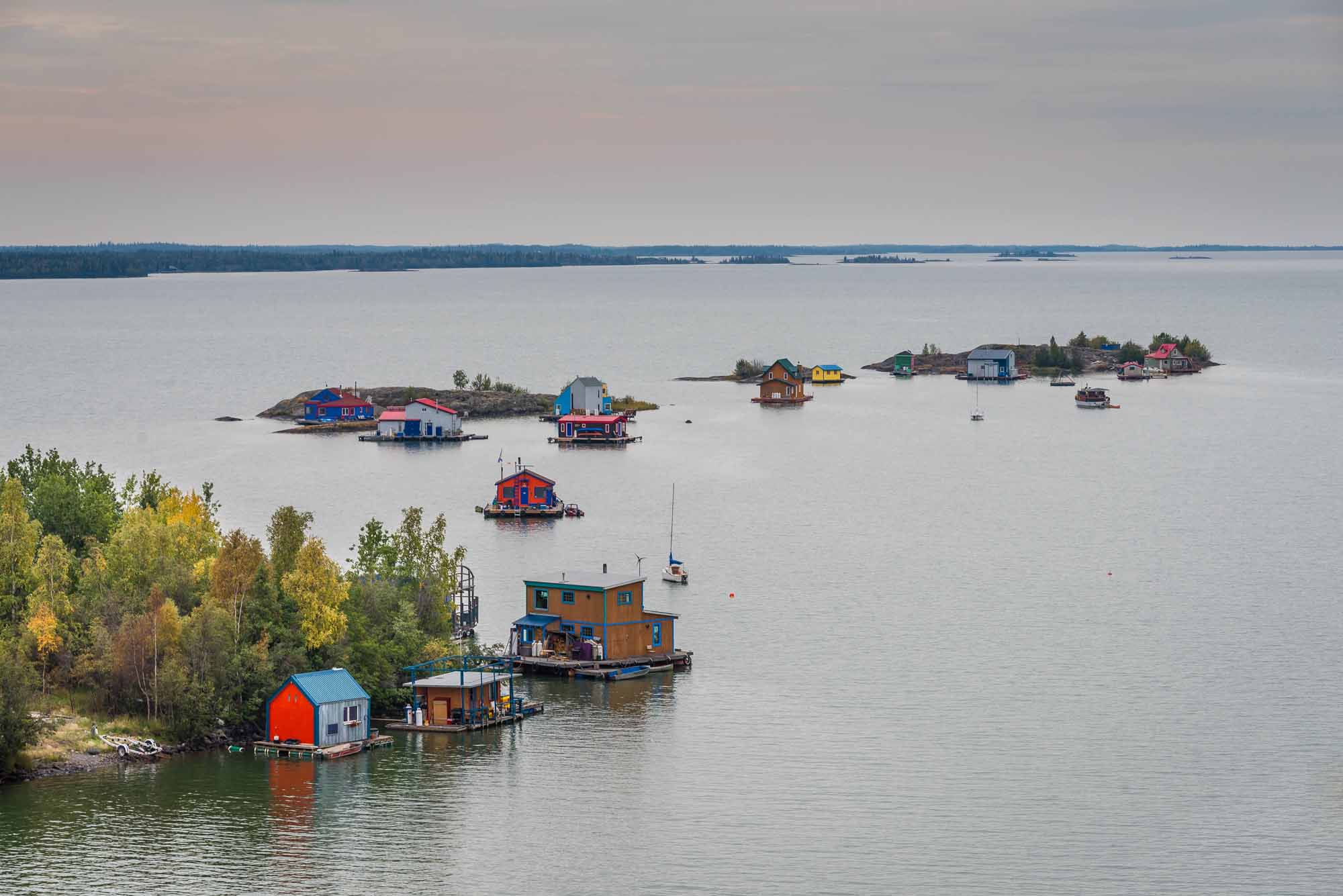Dubawnt Lake, 3833 km2, elevation 236 m, is situated in the southern part of mainland Nunavut, 350 km south of the Arctic Circle. Within the Precambrian Shield, the lake has irregular shorelines and numerous islands. It is drained northward by the Dubawnt River into Aberdeen Lake, then eastward by the Thelon River into Hudson Bay. Its water is clear and deep. Lake trout, lake and round whitefish and arctic grayling are common in the lake. The surrounding slopes consist of glacial till, festooned by the abandoned beaches of a proglacial lake up to 73 m above the present water level. The vegetation is low arctic tundra with heath and lichens, although scattered groves of stunted spruce occur at the south end. The lake is on the migration route of the Qamanirjuaq caribou herd, consisting of over 500 000 animals. Muskoxen occur in the area, especially to the west, within the Thelon Game Sanctuary. Wolves, foxes and grizzly bears are the main predators. The lake is at the contact point between the Chipewyan and inland Inuit, but there are no permanent settlements here. The lake was discovered by Samuel Hearne in 1770, but remained virtually unknown until explored by Joseph B. Tyrrell in 1893.
-
- MLA 8TH EDITION
- Zoltai, S.C.. "Dubawnt Lake". The Canadian Encyclopedia, 03 July 2014, Historica Canada. development.thecanadianencyclopedia.ca/en/article/dubawnt-lake. Accessed 08 January 2026.
- Copy
-
- APA 6TH EDITION
- Zoltai, S. (2014). Dubawnt Lake. In The Canadian Encyclopedia. Retrieved from https://development.thecanadianencyclopedia.ca/en/article/dubawnt-lake
- Copy
-
- CHICAGO 17TH EDITION
- Zoltai, S.C.. "Dubawnt Lake." The Canadian Encyclopedia. Historica Canada. Article published February 07, 2006; Last Edited July 03, 2014.
- Copy
-
- TURABIAN 8TH EDITION
- The Canadian Encyclopedia, s.v. "Dubawnt Lake," by S.C. Zoltai, Accessed January 08, 2026, https://development.thecanadianencyclopedia.ca/en/article/dubawnt-lake
- Copy
Thank you for your submission
Our team will be reviewing your submission
and get back to you with any further questions.
Thanks for contributing to The Canadian Encyclopedia.
CloseArticle
Dubawnt Lake
Article by S.C. Zoltai
Published Online February 7, 2006
Last Edited July 3, 2014

 Share on Facebook
Share on Facebook Share on X
Share on X Share by Email
Share by Email Share on Google Classroom
Share on Google Classroom


